Cruise observation in FY2018
1. Western / Central Pacific
(1)R/V Mirai(MR18-04 Leg.1: 2018/7/19-8/10)”Build-out of Super Site observation network”
Recovery / Redeployment of KEO sediment trap mooring system, Interdisciplinary observation at KEO, K2 and other stations.
(2)R/V Mirai(MR18-06 Leg.4: 2019/3/5-3/25) “Characterization of Marine bioaerosol”
Analysis of organic substances at the sea surface
2. Japan Sea
(1)T/S Oshoro-maru(C053 Leg.2 2018/4/24-5/1) “Global warming impacts on biogeochemical change in the Japan Sea”
Primary productivity observation
3. Eastern Indian Ocean
(1)T/S Hakuho-maru (KH-18-06 Leg.2: 2018/11/6-2018/12/3) “Material cycle in the Eastern Indian Ocean centering the Bay of Bengal”
Interdisciplinary transect observation along 88 degree east
Topics
1. Evaluation of contribution of typhoon to nutrient supply in the oligotrophic region
In order to clarify mechanism of nutrient supply to support primary productivity in the oligotrophic region, time-series sediment trap experiment has been conducted at station KEO where NOAA surface buoy has been deployed since summer in 2014. In addition to evaluation of cyclonic eddy, contribution of typhoon to nutrient supply was evaluated this fiscal year. During two years (2014 – 2016), five typhoon passed near station KEO. It was suspected that pass of typhoon introduces increase of primary productivity by subsurface nutrient supply as reported previously. However, based on time-series vertical profile of water temperature, uplift of subsurface nutrient-rich water was not observed unlike pass of cyclonic eddy. On the other hand, near-inertial internal wave was observed at about 50 m during about 10 days after typhoon T1414 passed in September 2014. Using climatological NO3 concentration gradient and development of turbulent diffusivity computed by the turbulence closure model, turbulent flux of NO3 at nitracline by turbulent mixing following typhoon T1414 was calculated and sequential increases of primary productivity and settling particle were suspected. As a result, typhoon-induced increase of settling particle was suspected to be only 5 % of guesstimated increase of settling particle. Thus, contribution of typhoon to nutrient supply is small at least during two years observation period. Detail is described in the following paper.
Honda M.C., Y. Sasai, E. Siswanto, A. Kuwano-Yoshida, H. Aiki, M. F. Cronin: Impact of cyclonic eddies and typhoons on biogeochemistry in the oligotrophic ocean based on biogeochemical / physical / meteorological time-series at station KEO. Progress in Earth and Planetary Science 5:42, https://doi:org/10.1186/s40645-018-0196-3 (2018)
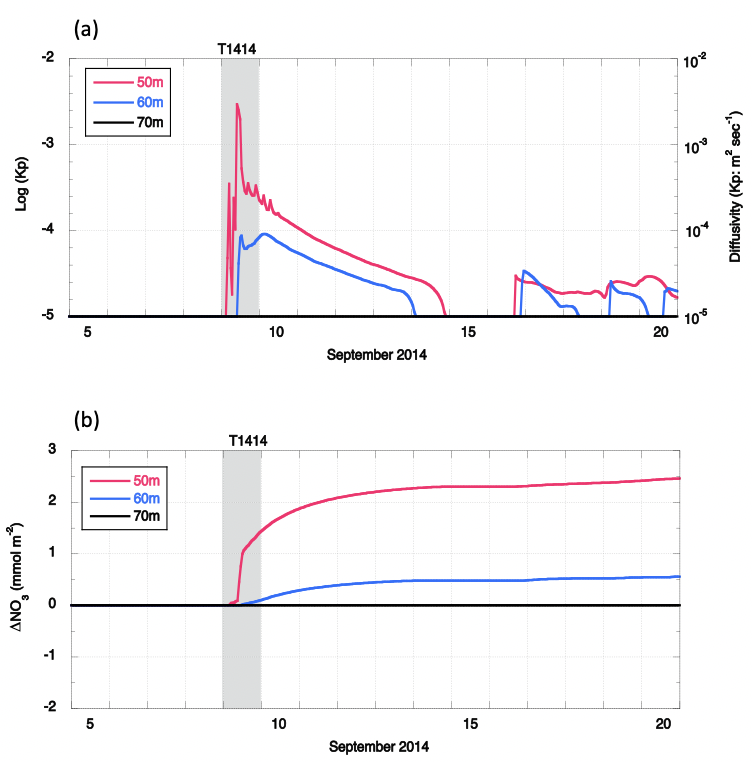
2. The Eastern Indian Ocean Expedition focusing on the Bay of Bengal
The Bay of Bengal, the northern hemisphere of the Eastern Indian Ocean, is the “hot spot” from viewpoint of “land-ocean interaction”, “atmosphere-ocean interaction”, “human activity-ocean interaction”. Nowadays called “Anthropocene”, the Bay of Bengal is model ocean for better understanding the future ocean, However, this region is still understudied region. Thus, international scientific programs such as IIOE-2 and SIBER are ongoing. In order to collect interdisciplinary oceanographic data, the Eastern Indian Ocean Expedition, transect cruise from 16N to 20S along 88E, was conducted in November-December 2018 by using R/V Hakuho-maru under collaboration with scientists and students from universities.
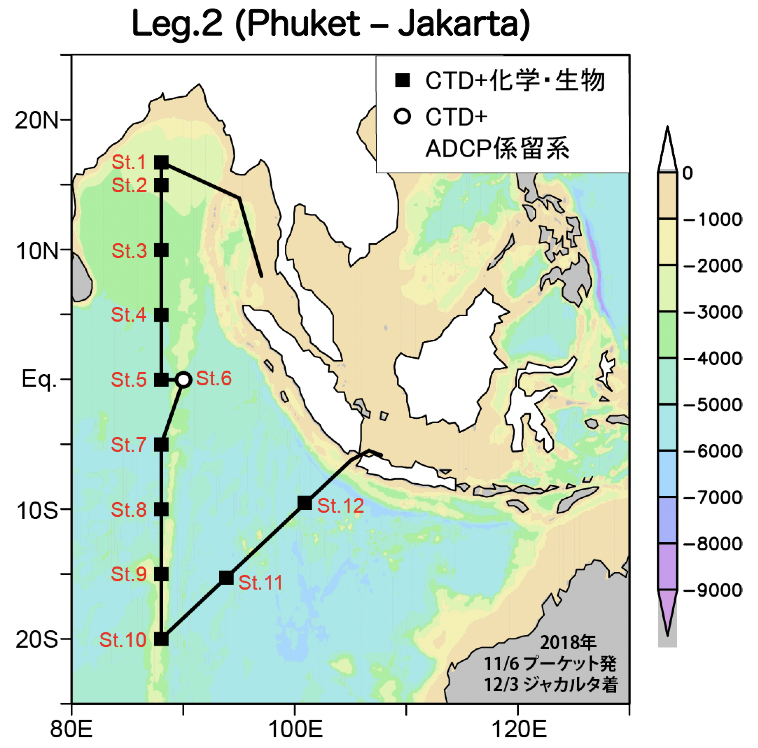
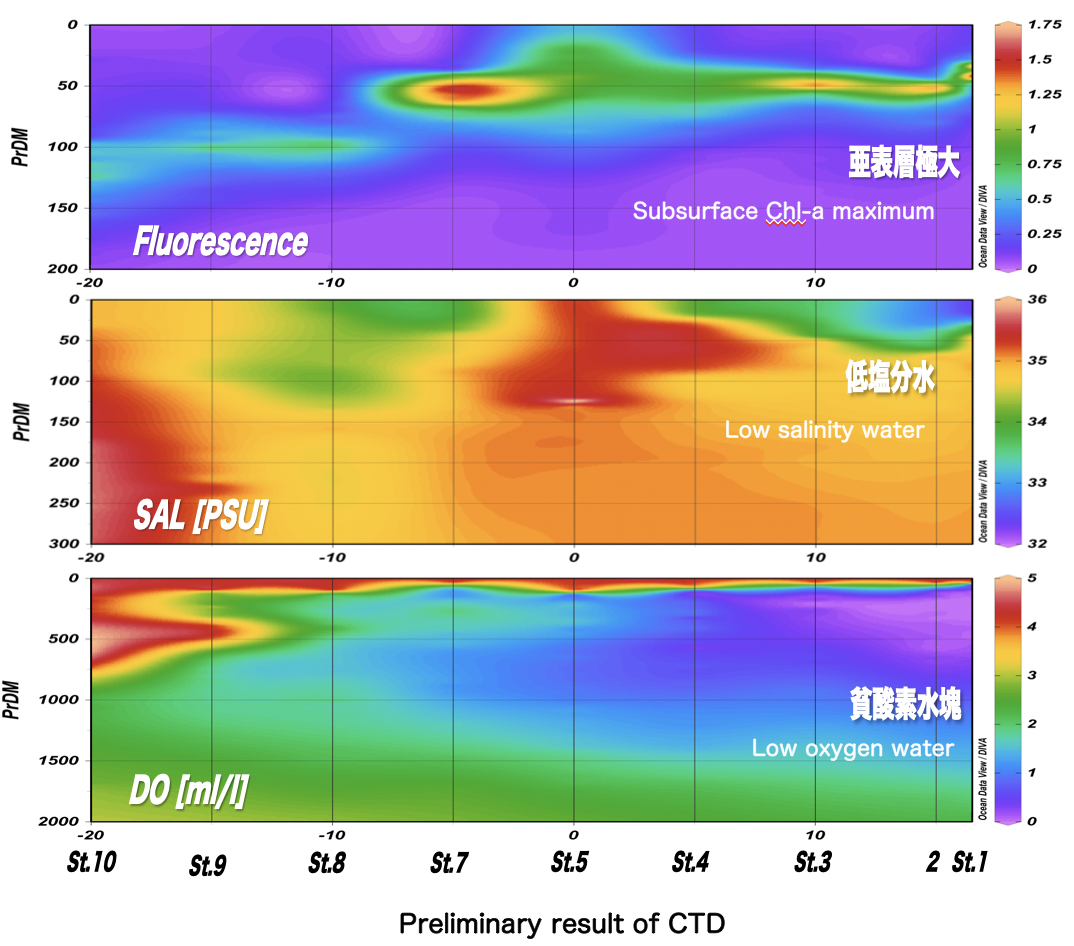
3. Trial use of Unmanned Surface Vehicle (USV)
As substitute of the mooring system in the next generation, USV is potential time-series observation system. The test trial of one of USV, Saildrone, was conducted around time-series station KEO, meteorological / physical / biochemical data were acquired and its quality was checked.
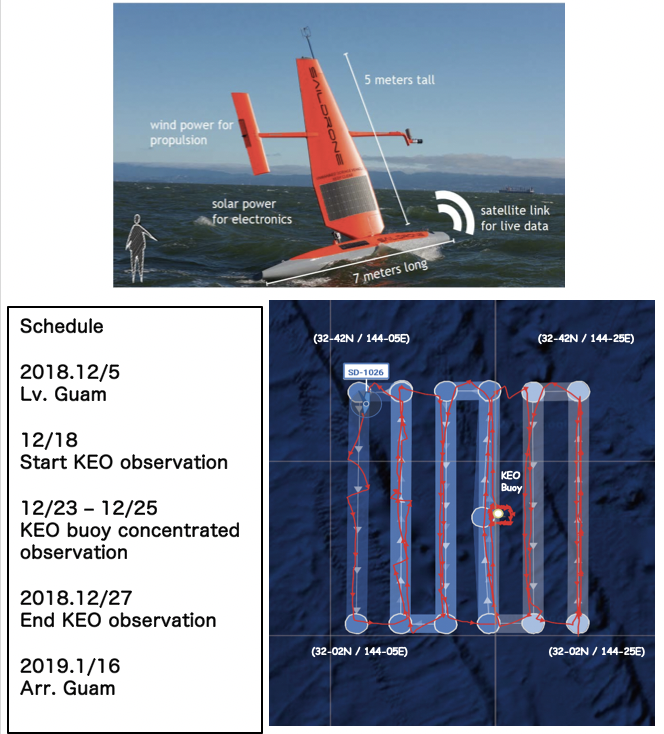
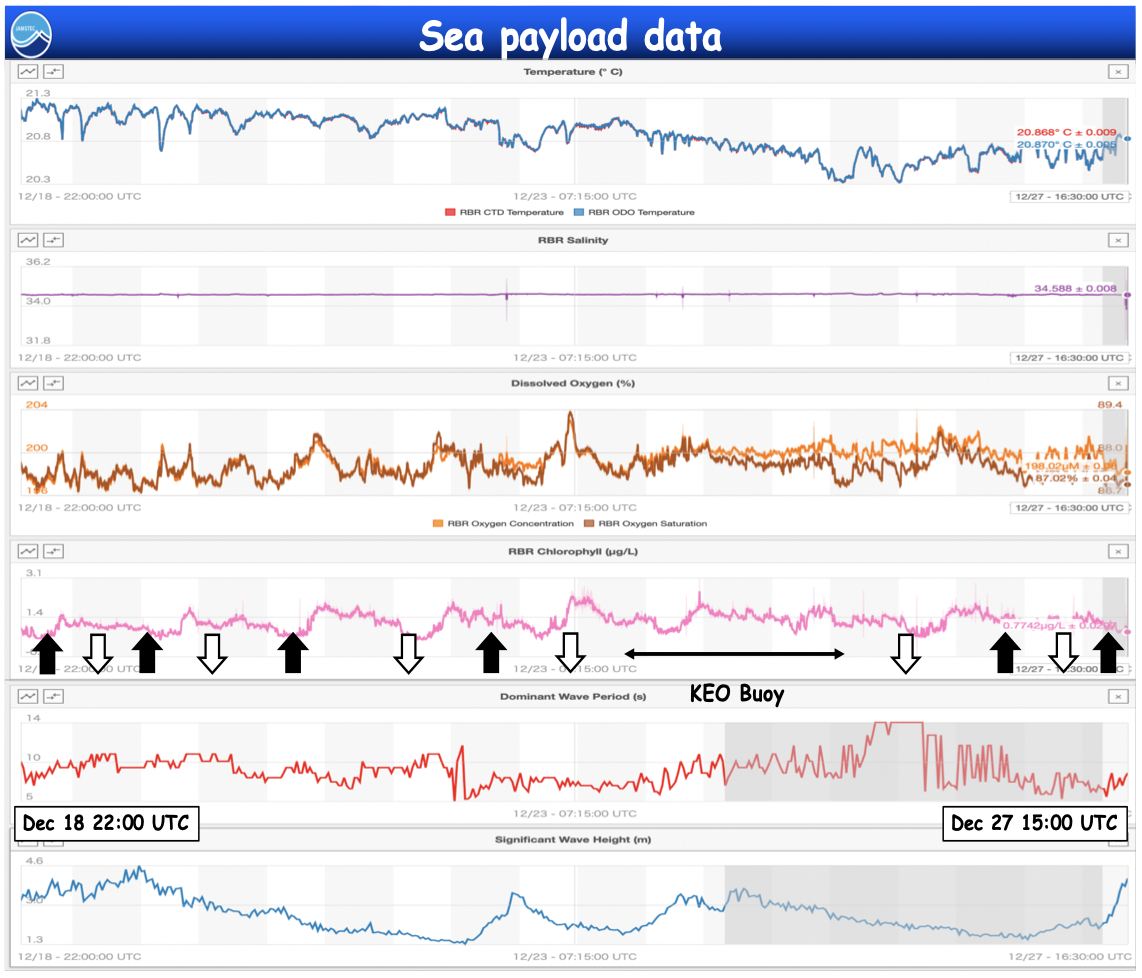
4. Phytoplankton bloom study in the Japan Sea
The increasing rate of sea surface temperature in the Japan Sea is larger than that for the average of global ocean. There is a concern to affect the marine ecosystems due to the stratification attributable to the warming.
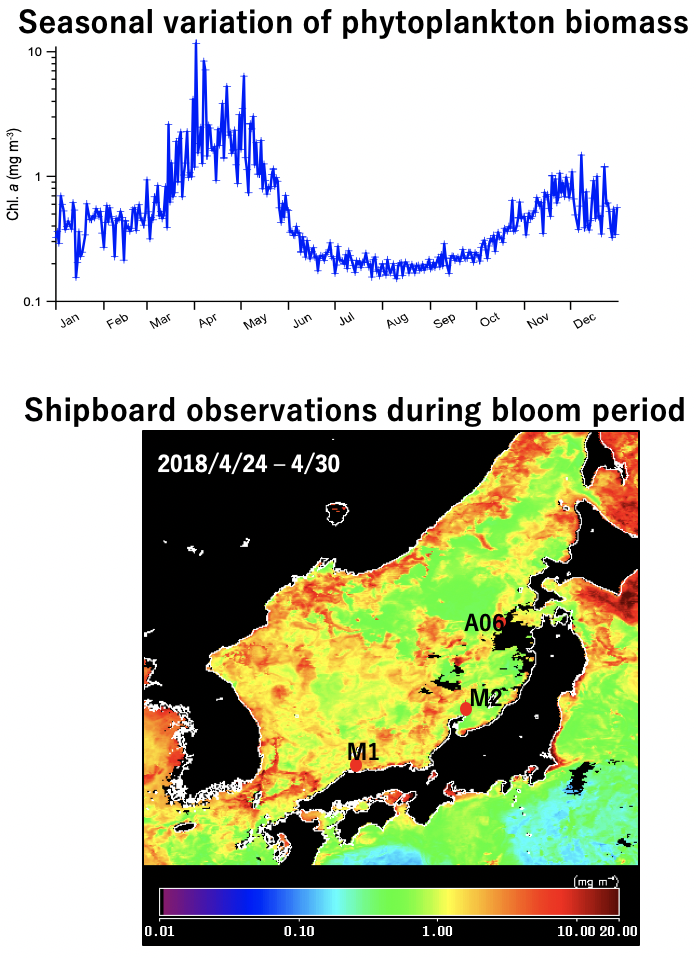
Phytoplankton bloom occur in spring and autumn in the Japan Sea. Especially, the spring bloom is remarkable, and the primary production at that time reaches about 40 % of a year. We joined the shipboard observation during the bloom period, and we obtained phytoplankton data immediately after the end of bloom. As a result, we confirmed that phytoplankton composition changes rapidly to the smaller size groups due to the nutrient depletion from the larger diatoms which are predominant during the bloom period. We concern that such a change of phytoplankton community structure will affect the food chain mechanisms.
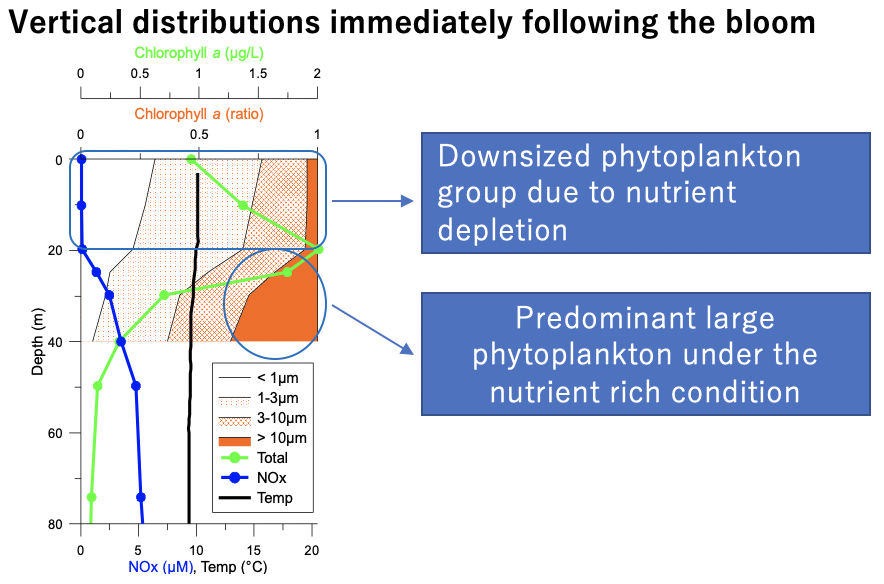
5. Satellite Oceanography
5.1 Unusual dispersion of the Changjiang diluted water in summer 2010 (Siswanto et al., 2018)
Distribution of Changjiang diluted water with low-salinity and high-primary production water in the East China Sea in summer 2010 was unusual, showing farthest southeastward dispersion and elongated pattern from the center of the East China Sea to the area south of Kyushu Island (a, b). Such an unusual dispersion was attributed to southwesterly anomalous winds (d) and high Changjiang discharge (white line in c) caused by high rain rate (yellow line in c). It was also found that southwesterly anomalous winds and high discharge were associated with El Nino event (negative Nino3.4 index, black line in c).
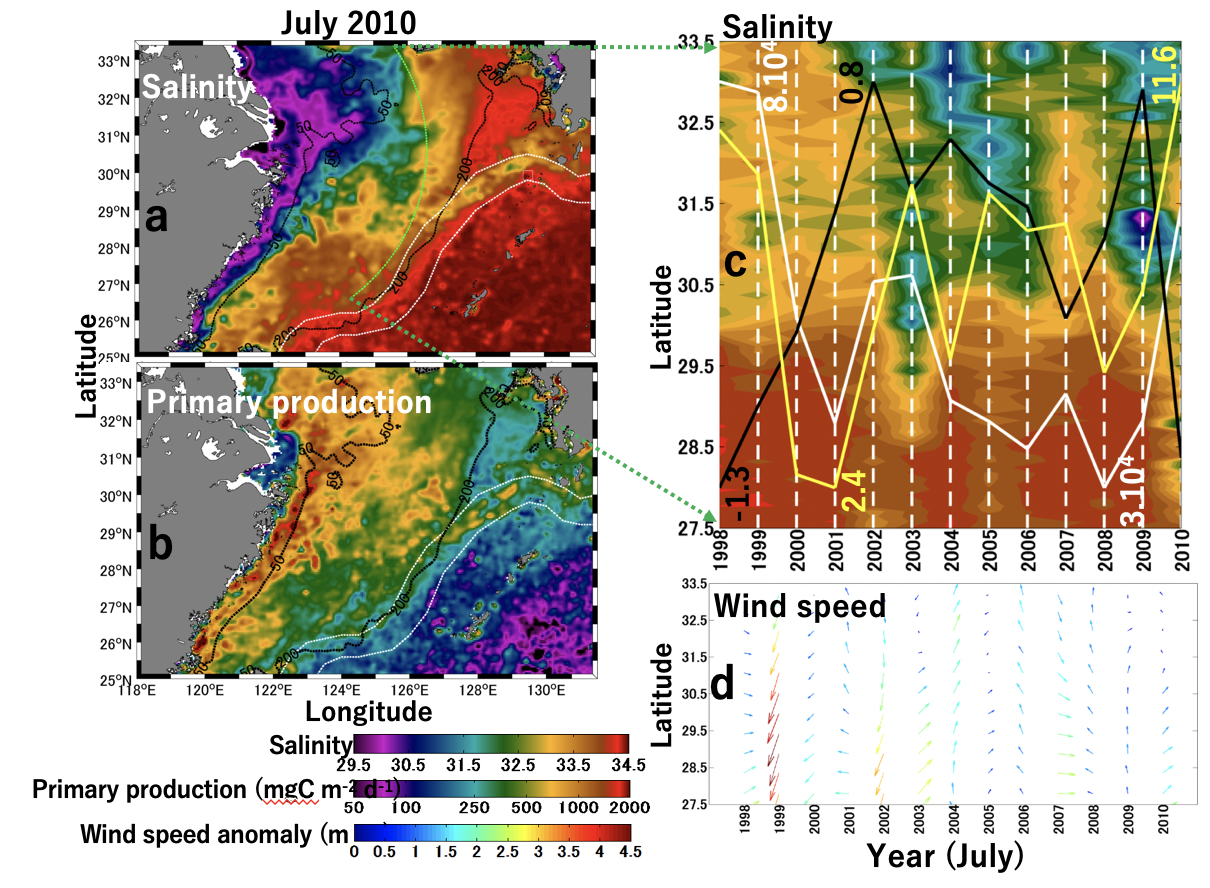
5.2 Impact of cyclonic eddy on phytoplankton in the Kuroshio extension region
Satellite remote sensing observed increases of chlorophyll-a concentration (Chl-a) over the area with negative sea surface height anomaly (SSHa) in the KEO region (32.5N / 140E-160E, a, b). This indicate that upwelled nutrients due to cyclonic eddies likely promote phytoplankton growth. In addition, both remote sensing observation and numerical modelling (c, d) indicated that in the years when many cyclonic eddies were formed during winter, phytoplankton spring bloom seems to start earlier. This was probably attributed to shallowed mixed layer which improve light availability within mixed layer.

5.3 Other activities in Satellite Oceanography
(1) Hosting the 6th Asian Workshop on Ocean Color 2018
https://ebcrpa.jamstec.go.jp/rcgc/e/6thAWOC2018/overview.htm
(2) Launching the Low-Trophic Level Organism Map of Asia-Pacific (LowTroMAP) data base
https://ebcrpa.jamstec.go.jp/rcgc/e/APN/index.htm